In Southern California, the forecast of a Santa Ana wind event is a sobering prognostication, especially for public safety officials and those living in the wildland-urban interface. These most often occur in the cooler months, bringing multi-day periods of strong, erratic northeast winds, hot dry conditions and single-digit humidity to the mountains, inland valleys and coastal regions, creating exceptionally dangerous fire conditions.
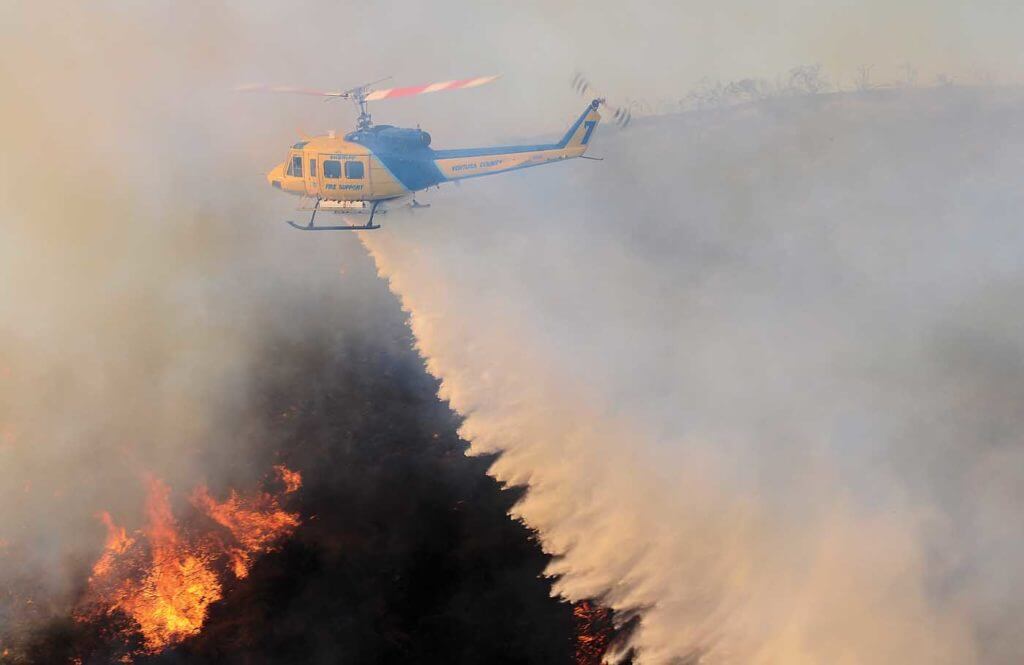
On Dec. 2, 2017, the National Weather Service (NWS) issued a “red-flag warning” for an especially strong and long-duration Santa Ana event to affect the coastal and mountain areas of Southern California, from Santa Barbara to San Diego.
In Ventura County, around 40 miles northwest of Los Angeles, officials implemented their action plan for such instances: increasing staffing of critical public safety personnel and strategic positioning of resources to maximize emergency response.
By Dec. 4, the region was experiencing the effects of the Santa Ana winds. While those in coastal communities and lower elevations may not have necessarily been enduring their full wrath, just a few miles inland, winds were significantly stronger, blowing 30 to 50 miles per hour (50 to 80 kilometers per hour) and forecast to increase after dark.
That evening, just after sunset, Ventura County Fire Dispatch began receiving calls of a fire start in a rugged canyon north of the community of Santa Paula, 12 miles (20 km) east of Ventura. This is a rural and agricultural setting nestled between steep mountains and miles of rolling hills extending west all the way to the coast.

Fueled by exceedingly dry grasses, brush and chaparral, and pushed by winds gusting to 70 mph (113 km/h), the flames rapidly spread southwest across the terrain. This was the beginning of the Thomas Fire — a blaze which, for over one month, wrought terror and destruction over an expansive two-county area, ultimately earning the distinction as the largest wildfire in the state’s history.
Within minutes, fire crews were racing to the scene to mount an initial attack. Ten miles south at the Camarillo Airport, crews at the Ventura County Aviation Unit (VCAU) had already pushed two of their firefighting helicopters from the hangar and were spooling up.
During these red flag events, VCAU staffs two helicopters 24/7, each equipped with 375-gallon Simplex tanks. One aircraft is assigned as a dedicated fire asset crewed by a pilot and a Ventura County firefighter specially trained for the role of fire manager and helicopter coordinator (HELCO). The second is similarly crewed for the fire mission, but also has a three-person rescue and medevac team.
Risk vs. Gain
“The winds were crankin’ that night — 30, 35 knots at the airport,” recalled senior pilot Ken Williams, who was piloting Copter 7, a Bell Super Huey. “We took off out of here on goggles just after 1830. Even from a distance I could see the fire clearly. It was in the ‘front country,’ just below 4,000-foot peaks. With the size of the fire already and the wind conditions I thought, ‘Oh no, this is not going to be a good thing.”
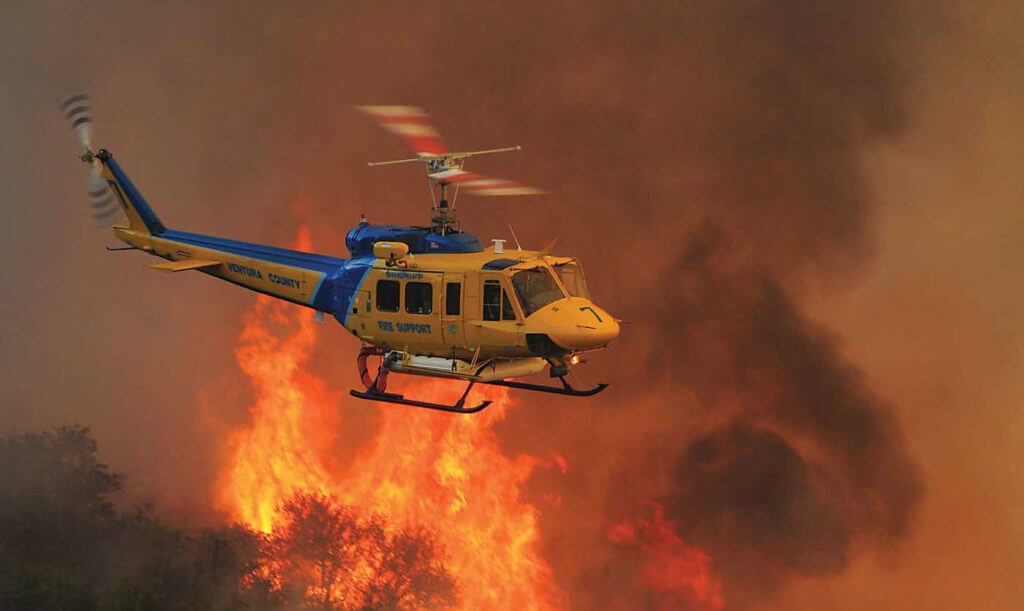
Pilot Alex Keller and firefighter/paramedic Randy Gilbert were in trail behind Williams in Copter 8, a Bell 205B, and made a similar assessment. Keller recalled, “From the time we were just a couple miles out, I knew it was gonna be a long night. We saw the glow, saw the fire, and it was moving faster than any fire I had ever seen.”
Once on scene, Williams attempted to position Copter 7 so his partner, Fire Captain Mel Lovo, could provide fire assessments to the incident commander. This relatively straightforward mission would prove to be a daunting task, however. Williams said, “As I started to make my way around the fire I got into some ‘roll-out’ from the winds that were just plain violent!
“I can’t tell you how intense the up and down drafts were,” he continued. “And I was thinking to myself, at what point are you going to exceed some of the limitations of the aircraft? Torque limits and just the stress to the airframe and components… It’s the risk/gain analysis we always talk about and asking yourself how productive are we really going to be?”
Given the conditions, Williams concluded they could not safely commence water-dropping operations. So, while they waited for a helispot to be readied at the Santa Paula Airport for ground fill operations, both helicopters took up orbits at the edge of the fire, remaining close enough to continue making reports on the fire’s progress.
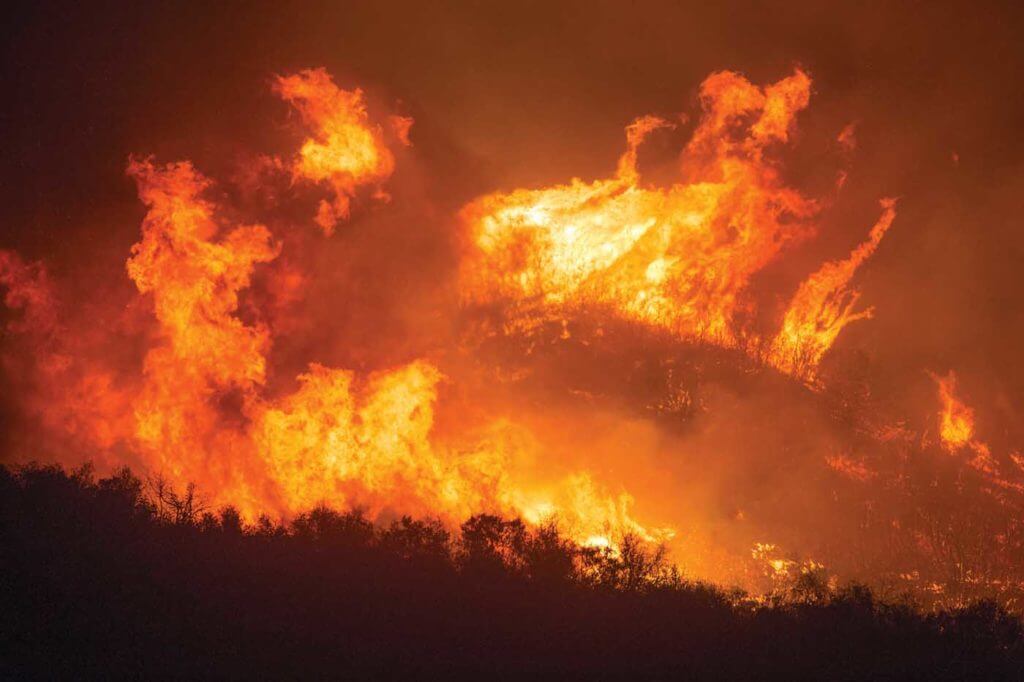
Shortly after landing at the helispot, reports came in of a second fire start just a few miles north of the first fire, near the community of Ojai. While some suspected this was a spot fire emanating from the Thomas Fire, both helicopter crews believed it was unrelated and indeed a second ignition. Regardless, this second start was now a priority. Both aircraft took on loads of water and departed to assess the new blaze.
Arriving in Ojai, the crews estimated the fire had grown beyond 15 acres. Again, the winds were howling across the steep, rugged terrain, wreaking havoc with aircraft controllability. Williams said, “I went in for a drop and the wind was so violent I ended up punching the load of water off. The power changes in the aircraft were too substantial to control so in the interest of safety we punched the water off and declined to take any further action.” Keller had a similar experience.
About this time an L.A. County Fire Department S-70 Firehawk arrived to provide support. The Ventura crews explained their aircraft’s performance and control experiences and asked the Firehawk crew, with their larger, more powerful Type-1 machine, to fly into the scene and make their own assessment. They came to a similar conclusion.
The Firehawk was ultimately released to return to L.A. County for fires that were occurring there. Even the Santa Barbara County Sheriff’s Air Support Unit, which sent one of its Hueys for initial attack, was forced to turn around and go home. All three agencies are among a growing number authorized to conduct nighttime firefighting operations using night vision goggles (NVGs) under California’s FIRESCOPE night flying guidelines.
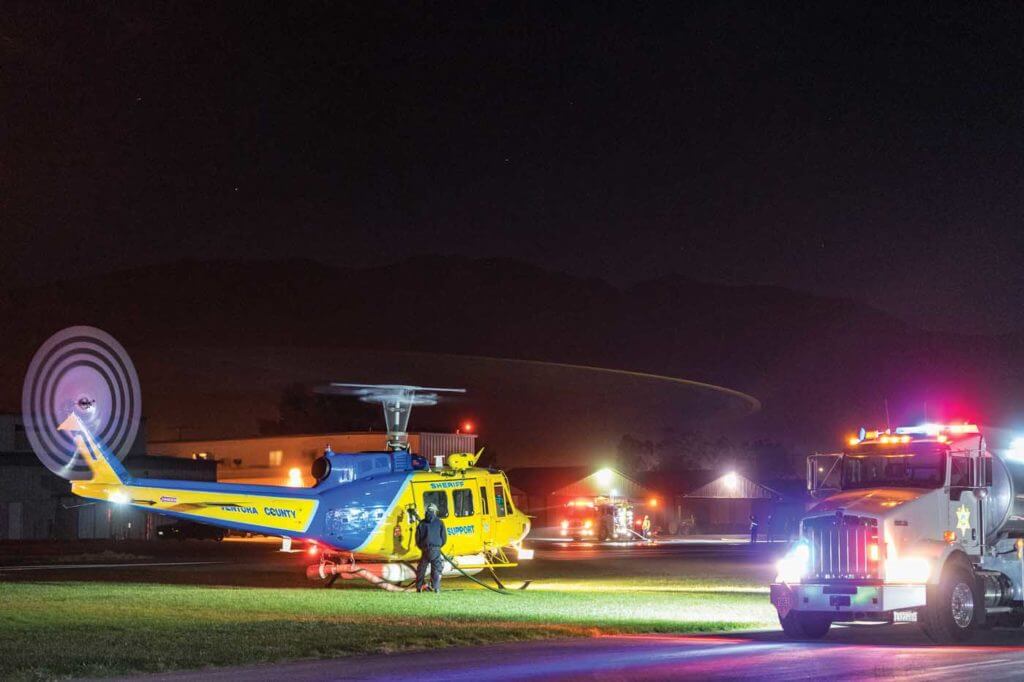
Keller said, “I knew, even with our helicopters and even if we got everything L.A. County has, we weren’t stopping this. Wind-driven fires typically don’t get put out by man or machine. They get put out when the wind stops. So our goal at that point was to do what we could to help limit the destruction of property and the evacuation of people.”
Copter 7 and 8 crews discussed the situation and agreed, with the existing wind conditions and the location of the fires, there was no way to be safe or effective. The decision was made to suspend any plans for air attack any time soon. Instead, they elected to return to their base and wait for conditions to improve. “And it’s a good thing we did,” said Williams. “Because the conditions worsened into the night where the winds were gusting to 70 mph. Several times it sounded like the roof of our hangar was getting ripped off!”
Out of control
Several hours later, around 3 a.m., Copter 7 and 8 decided to again launch to assess conditions in hopes of returning to the fight. By this time the two fires had merged and exploded into a raging firestorm. Burning embers were being blown miles ahead of the main fire front, creating spot fires that were blowing up into new flame fronts.
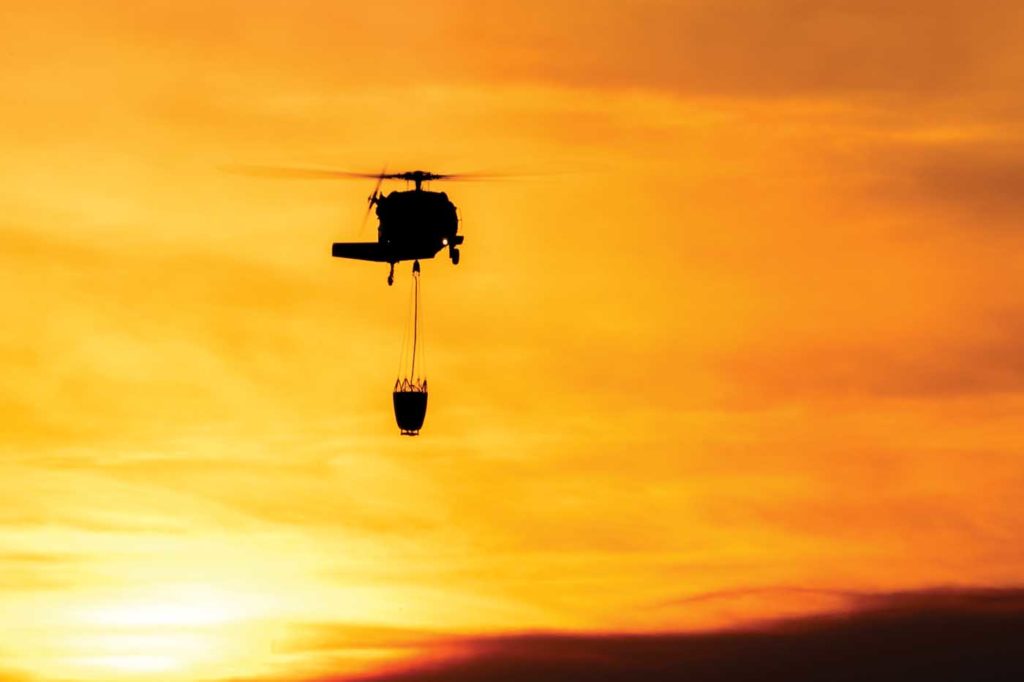
In just a few hours the rapidly advancing flames had raced across nearly 10 miles of terrain, incinerating everything in their path, including entire neighborhoods. In spite of the best efforts of 1,000 firefighters on the ground, the fire had now consumed more than 80 square miles and fire officials were reporting zero containment. The front lines of this fight were now in the heart of downtown Ventura and burning to within blocks of the beach.
A new helispot was established in Kimball Park and a Santa Barbara Sheriff’s Huey returned to join Copter 7 and 8 for their second attempt to attack the fire. The Santa Barbara aircraft and Copter 8 coordinated ground filling and water dropping operations while Copter 7 maintained the overall aerial coordination.
But instead of specific objectives to engage, it was largely up to the individual flight crews to seek targets of opportunity for immediate-need structure protection.
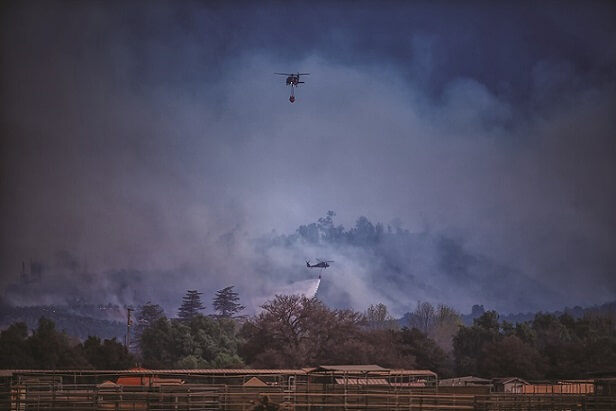
“It was really hectic,” said Williams. “You’re looking at two other aerial assets on scene and no one else flying. You’re under NVGs, in those crazy conditions and you’re just trying to do the best that you can. It’s a lot of multi-tasking and mental, and at some point physical fatigue, because of how long you’re flying, the fact you’re under goggles, that you’re trying to control an aircraft in wind conditions that are probably on the borderline of exceeding limits. So again, it goes back to are you being safe and effective?”
Complicating things further was what the wind was doing to all that smoke. “With a wind-driven fire, the smoke lays down horizontally and the fire just runs beneath it,” said Keller. “That does two things. It gives you really clear air on the flanks because all the smoke is going in one direction. But the bad thing, there’s no way you’re ever going to get to the front of it or catch up with it because that smoke is too bad.
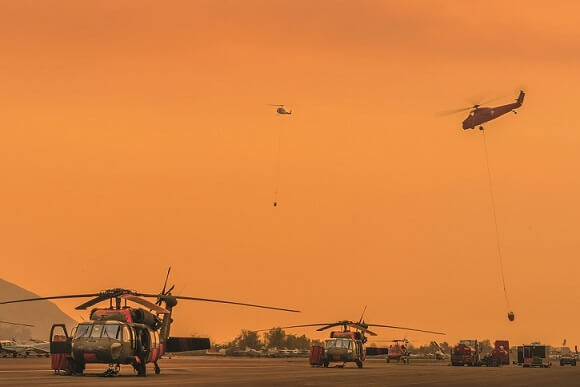
“I never saw the head of the fire that night because it was too smoky to get into those areas. So this thing is burning full speed toward the beach and we’re just picking up what we can along the sidelines. And the sidelines for us that night was the whole front country of Ventura City where we were actively losing structures all throughout the city and in the surrounding hillside neighborhoods.”
Keller, who has lived in Ventura most of his life, said, “To see that kind of event, with that kind of wind, where homes in the front country with ocean views are being taken out, that was something I thought would never happen. Some of these homes that were lost, I would have never thought in a million years would have burned from a brush fire. But it was one of those things where, once one house goes with that wind behind it, it turned into a blowtorch the size of a home, going into the next home, and continuing into the next home. And that went on and on and on…”
The ground and air fight continued throughout the early morning hours. By dawn, however, the winds again increased, grounding all air assets. For Williams, Keller and their crews, their first operational period on the Thomas Fire lasted 24 hours, during which time they made a total of 49 water drops, all on NVGs.
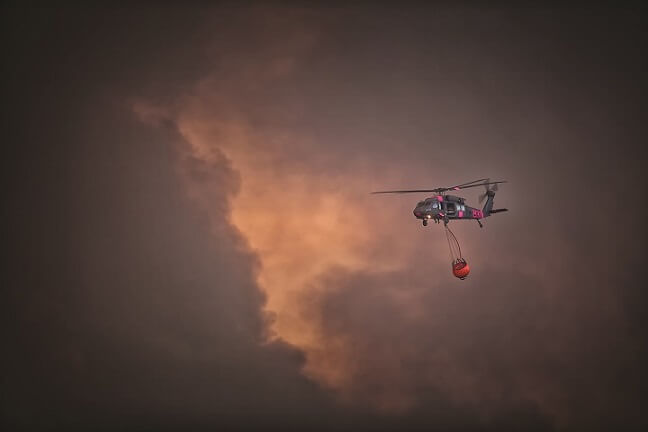
VCAU maintained its round-the-clock air assault until day three, by which point numerous Cal Fire and commercial assets were well established on scene. But for the first 14 days of the fire, as the wind shifted and steered the flames north through the coastal mountains toward Santa Barbara, VCAU continued round-the-clock staffing for two aircraft.
While the day shift saw relatively little activity, the night NVG aircraft were kept busy for structure protection only.
The dedicated rescue/medevac helicopters responded to four mission requests, which involved a hoist evolution, a medevac and the recovery of a Cal Fire engineer who lost his life fighting the fire. For the entire incident, which ran through early January, VCAU aircraft flew a total of 73 hours. All told, the Thomas Fire consumed more than 281,000 acres (440 square miles), and destroyed more than 1,060 structures, over 500 in Ventura.
“This was one of those fires where the entire period of the wind event, which ended up being 12 or 13 days of strong winds, it was constantly at the edge of the limitations of the aircraft,” said Keller. “There were nights and days where you might have to land and shut down multiple times because the wind just got too intense to operate safely.”

Keller, who started his career as a wildland firefighter at age 18, and flew helitack with the U.S. Forest Service before coming to Ventura County, won’t forget the Thomas Fire anytime soon.
“I’ve seen a lot of different topography and a lot of different fire models,” he said, “and this was, in my opinion, the Armageddon of all fires that I’ve seen personally.”





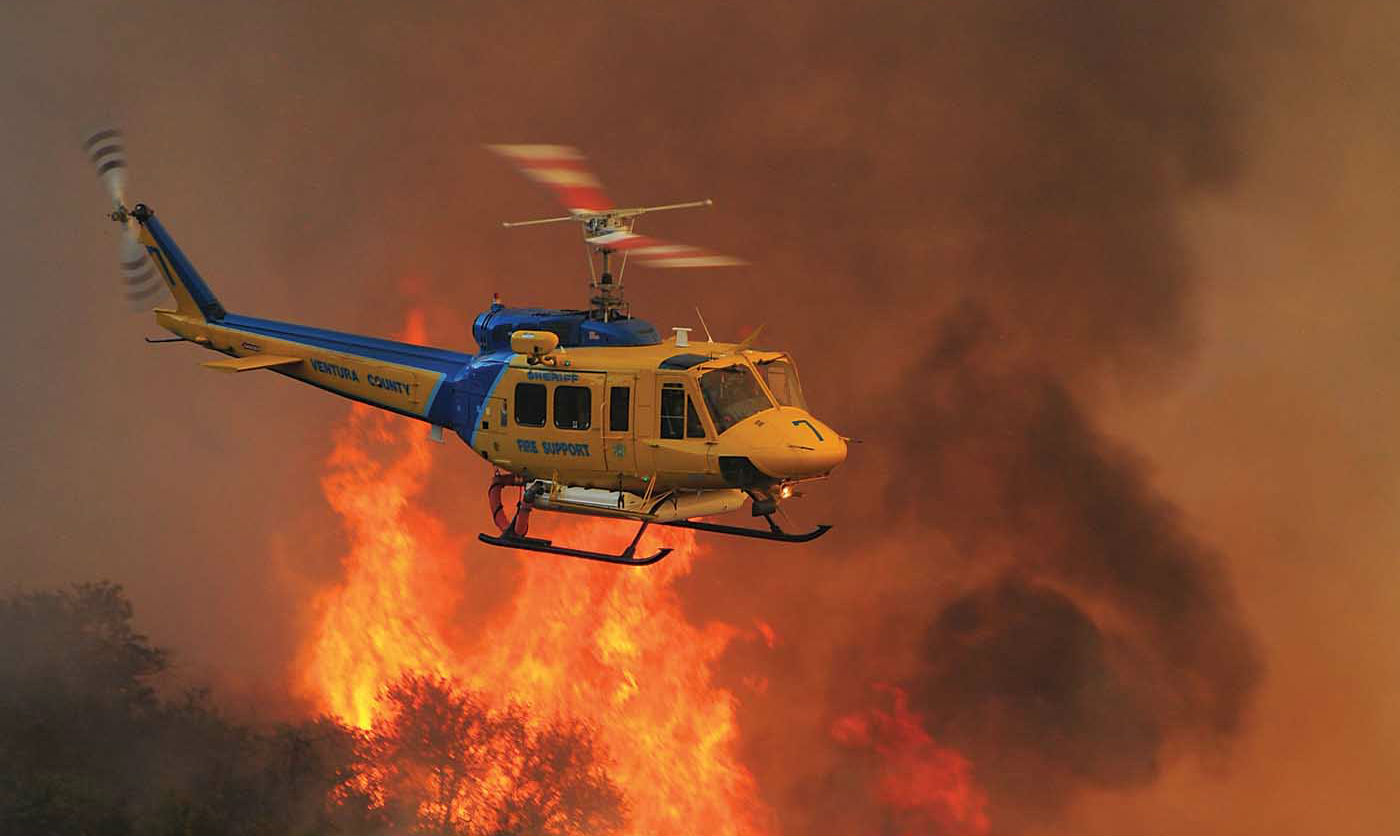
I was researching the tail number of the helicopter I flew in Vietnam ( tail number 69-15085 ) and found it is now your Copter 7. It was nicknamed Ship of Fools. It was a 114 Assault Helicopter Company, 2nd Platoon, 1st Aviation Brigade ship. Glad to see it is still flying and doing good stuff.